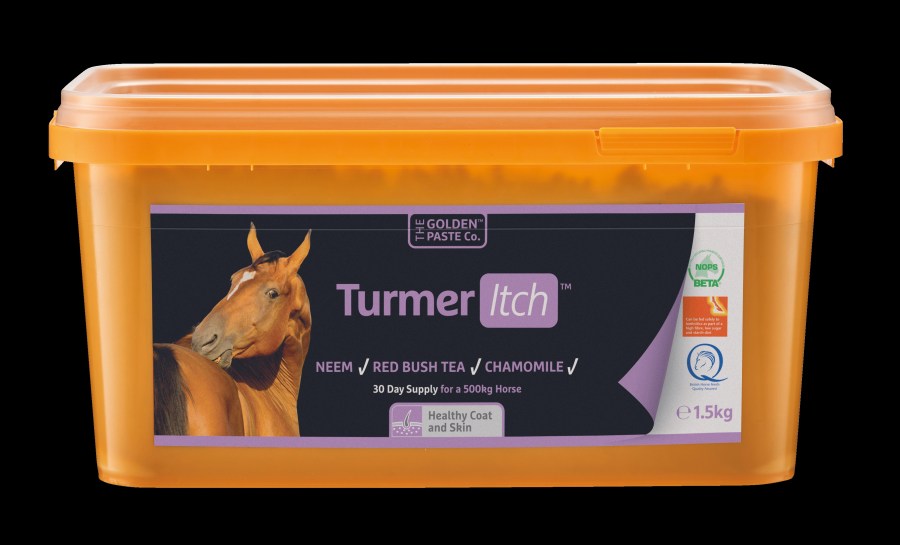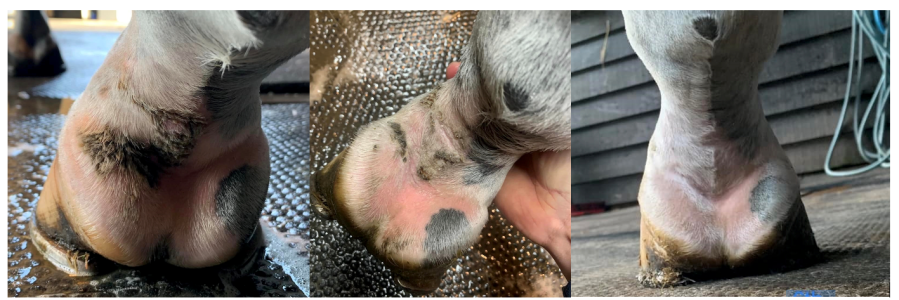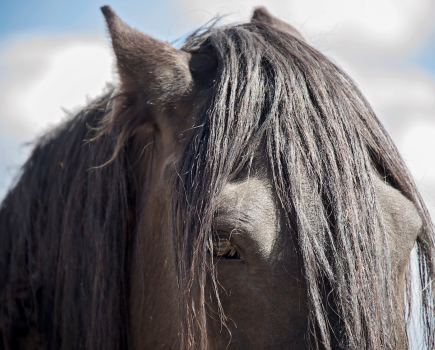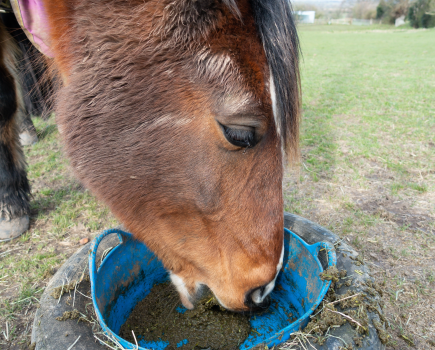Advertisement feature
Itchy skin in horses is often synonymous with summer health conditions such as sweet itch, however irritation to the skin can occur throughout the year, including during the winter. One of the most common conditions that horses may experience during cold, wet months is mud fever. This is a form of dermatitis that affects the lower limbs of horses, although it can also develop on the belly and back. Turmeric, a key ingredient of TurmerItch™ from The Golden Paste Company, has anti-inflammatory properties which helps to sooth irritation.

Save £5 on a 1.5kg tub of TurmerItch!
Your Horse readers can save £5 on a 1.5kg tub of TurmerItch. Buy before 29 February 2024 and pay just £39.99 when you enter the code YOURHORSE5 at the checkout — that’s a £5 saving for Your Horse readers! You can order here.
All about a horse’s skin
The skin is a complex organ, the outer layer being impenetrable and whose main function is a barrier. When this layer is damaged, such as in the case of mud fever where mud causes cracking and splitting, infection can occur. Most commonly these infections are bacteria related, as well as fungi and mange mites. Other factors, such as a compromised immune system and allergens, can all add to the risk. As with sweet itch, it may involve one or more factors to reach a threshold where symptoms become apparent.
Damage to the epidermis (the outer layer of skin) is what allows invasive toxins into the body. However, subsequent layers do provide lines of defence. Omega-3 fats support anti-inflammatory mechanisms, while at the same time adding to the suppleness of the skin. Sebaceous glands are microscopic glands found in hair follicles which lubricate the skin and can be reinforced with essential oils from natural sources; these essential oils can repel ticks and mites and help maintain skin integrity.
Antioxidants support normal immunological function and help repair tissue. This support from nutritional and naturally sourced ingredients forms a strong and secure outer layer, helping to deter microbes and external parasites and assist in the horse’s immune response if infection occurs.
What are the symptoms of mud fever?

Mud fever on the lower limbs can be a real problem in winter
Symptoms of mud fever include the following:
- Crusty scabs appearing on the heels or lower legs
- Broken and/or damaged skin
- Matted hair or patches of hair loss with raw skin underneath
- A creamy, white, yellow, or green discharge between the skin and the scabs
- Heat, pain and swelling in the lower limb
- In severe cases, lameness.
All of the above symptoms are indicative of infection and the horse’s immune response to it.
How can equine skin conditions be managed in the winter?
There are of course management practices to help reduce the risks of mud fever:
- Make sure the horse has access to dry areas when grazing and keep legs clean and dry, as much as possible.
- Avoid washing legs, or at least drying thoroughly after washing
- Applying barrier creams can also be beneficial for some horses.
In addition to management changes, nutrition can also play an important role in supporting conditions such as mud fever, along with others like cracked heels and rain scald. Soothing horses’ skin from the inside out can be incredibly effective as well as relatively simple, with the addition of a high-quality supplement to their diet.
How can turmeric help mud fever?
Turmeric is a great support to the horse’s skin as it has anti-inflammatory properties which soothes irritation, but it also supports the gut and has been shown to repel mites and other allergens.
TurmerItch™ from The Golden Paste Company (GPCo) includes a range of essential oils that have been shown to support immune responses both locally and at the gut level.
TurmerItch™ combines turmeric with other natural ingredients such as red bush tea, neem and chamomile, which help avoid itching, support the skin and the horse’s natural anti-inflammatory processes.
TurmerItch™: ‘I noticed a difference within two weeks’
We caught up with Chaise Purcell whose horse had a recent bout of mud fever. Chaise tried TurmerItch™ on her horse James Bond, who is known affectionately as Aston at home.
“For a few weeks I tried various well-known creams that are on the market plus some steroid medication from the vet, but it didn’t seem to be getting the scabby heels under control,” recalls Chaise. “The scabs didn’t want to clear up and I was getting a little anxious that it would not heal and might even get worse if it was a wet winter.”

Images from left: Aston’s mud fever before treatment (left), two weeks after introducing TurmerItch™ (centre) and full recovered (right)
It was after meeting a member of staff from The Golden Paste Company that she was advised to try TurmerItch™.
“I didn’t know much about Turmeric, but after looking into all the benefits, I decided to try it,” says Chaise. “I started feeding it in early October and I noticed a difference within two weeks — the scabs had become much smaller, and the skin was less angry.
“By the time Aston had been on TurmerItch™ for a month the scabs had healed, the skin was healthy again and clear of any cracks. I was not giving him anything else at that stage, so I am over the moon with the results.”
Find out more about the Turmeric range from The Golden Paste Company here.








